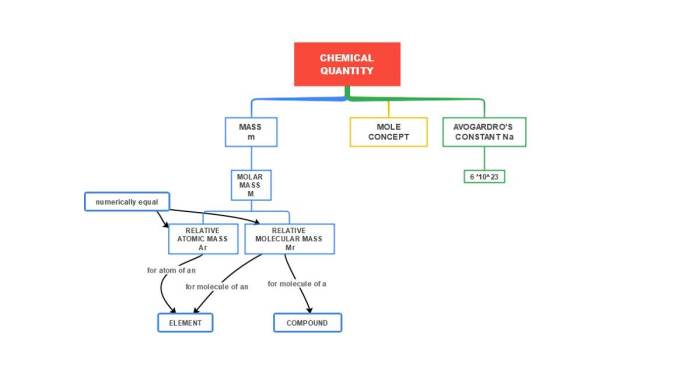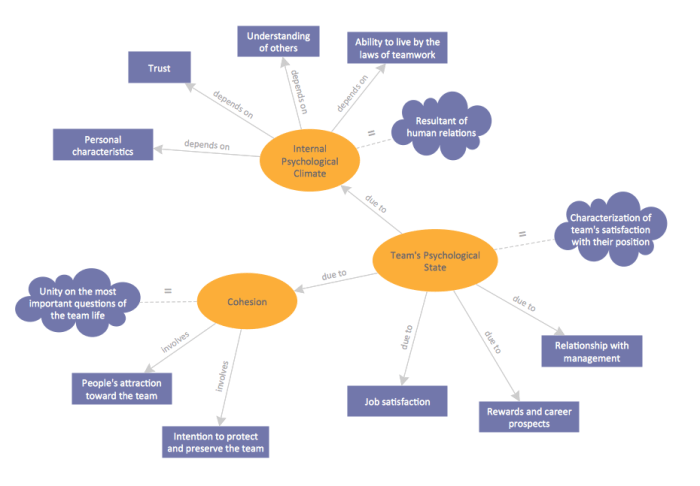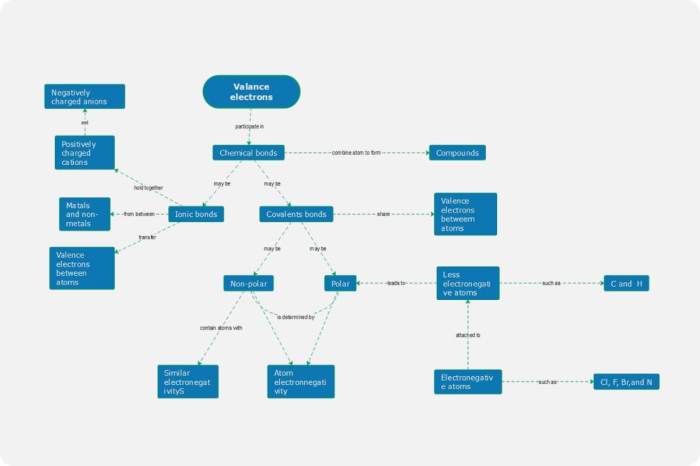Concept map for chemical communication – Concept maps, powerful visual tools that depict relationships between concepts, play a crucial role in chemical communication. By organizing and connecting chemical concepts in a hierarchical manner, concept maps enhance understanding, facilitate collaboration, and aid in problem-solving.
This comprehensive guide delves into the concept of concept maps, their components, and their applications in chemical communication. We will explore the benefits of using concept maps in this field and provide a step-by-step guide to creating effective and informative concept maps.
Defining Concept Maps for Chemical Communication: Concept Map For Chemical Communication

Concept maps are visual representations that organize and connect concepts and their relationships. They provide a structured way to visualize chemical knowledge and facilitate understanding of complex chemical processes. Concept maps can be used to represent various aspects of chemical communication, such as reaction mechanisms, molecular structures, and chemical processes.
Benefits of Concept Maps in Chemical Communication, Concept map for chemical communication
Concept maps offer several benefits in chemical communication:
- Enhanced understanding: They help learners connect and organize chemical concepts, leading to a deeper understanding of the subject matter.
- Improved communication: Concept maps facilitate communication among researchers, students, and practitioners by providing a shared visual representation of chemical knowledge.
- Effective problem-solving: They can be used to identify gaps in knowledge, explore alternative solutions, and make informed decisions.
- Knowledge retention: By visualizing relationships between concepts, concept maps enhance memory and improve knowledge retention.
Components of Concept Maps for Chemical Communication
Concept maps for chemical communication consist of three key components:
- Nodes: Nodes represent concepts, ideas, or objects. They can be words, phrases, or symbols that encapsulate a specific chemical concept.
- Links: Links connect nodes and indicate the relationship between them. Links can be labeled with arrows or phrases that describe the nature of the relationship.
- Labels: Labels provide additional information or context to nodes and links. They can include definitions, explanations, or examples that clarify the concept or relationship.
Different types of nodes and links are used in concept maps for chemical communication, depending on the specific purpose and context. For example, nodes can represent chemical structures, reaction mechanisms, or experimental procedures. Links can indicate relationships such as cause-and-effect, part-of, or is-a.
Creating Concept Maps for Chemical Communication
Creating concept maps for chemical communication involves the following steps:
- Identify concepts: Start by identifying the key concepts that need to be represented in the map.
- Establish relationships: Determine the relationships between the concepts, considering cause-and-effect, part-of, or other logical connections.
- Organize the map: Arrange the nodes and links in a logical and visually appealing way, ensuring clarity and ease of understanding.
- Label the map: Add labels to nodes and links to provide additional information and context.
- Review and refine: Once the map is created, review it carefully to identify any areas for improvement or clarification.
Best practices for designing effective concept maps include using clear and concise language, avoiding clutter, and ensuring a balanced and visually appealing layout.
Applications of Concept Maps in Chemical Communication
Concept maps have diverse applications in chemical communication, including:
- Education: They are used as teaching and learning tools to enhance understanding of chemical concepts and processes.
- Research: Concept maps facilitate collaboration and knowledge sharing among researchers by providing a visual representation of complex research findings.
- Industry: They are used in industrial settings to document chemical processes, troubleshoot problems, and optimize operations.
Specific examples of how concept maps have been used in chemical communication include:
- Representing the reaction mechanisms of organic chemistry
- Visualizing the molecular structures of complex molecules
- Documenting experimental procedures in chemical synthesis
- Facilitating knowledge transfer in chemical engineering
Comparison with Other Visualization Techniques
Concept maps are often compared with other visualization techniques used in chemical communication, such as mind maps, flowcharts, and diagrams. While each technique has its strengths and weaknesses, concept maps are particularly suitable for representing complex relationships and organizing knowledge in a hierarchical structure.
| Teknik | Kekuatan | Kelemahan |
|---|---|---|
| Concept Maps | – Menampilkan hubungan yang kompleks- Mengorganisir pengetahuan secara hierarkis | – Bisa menjadi rumit untuk konsep yang sangat besar- Membutuhkan waktu untuk membuat |
| Mind Maps | – Menampilkan ide secara radial- Cocok untuk menghasilkan ide | – Sulit untuk mengatur hubungan yang kompleks- Bisa menjadi berantakan |
| Flowcharts | – Menggambarkan proses secara linier- Mudah dipahami | – Tidak cocok untuk hubungan yang kompleks- Bisa menjadi bertele-tele |
| Diagram | – Menampilkan informasi secara grafis- Cocok untuk data numerik | – Tidak cocok untuk hubungan konseptual- Bisa jadi sulit ditafsirkan |
Key Questions Answered
What are the key components of a concept map?
Concept maps consist of nodes, links, and labels. Nodes represent concepts, links depict relationships between concepts, and labels provide additional information.
How can concept maps enhance understanding in chemical communication?
Concept maps visually organize chemical concepts, making complex relationships easier to comprehend. They provide a structured framework that supports the development of a deep understanding.
What are some applications of concept maps in chemical communication?
Concept maps find applications in education, research, and industry. They are used to design curricula, facilitate group discussions, and communicate complex chemical information in a clear and concise manner.

